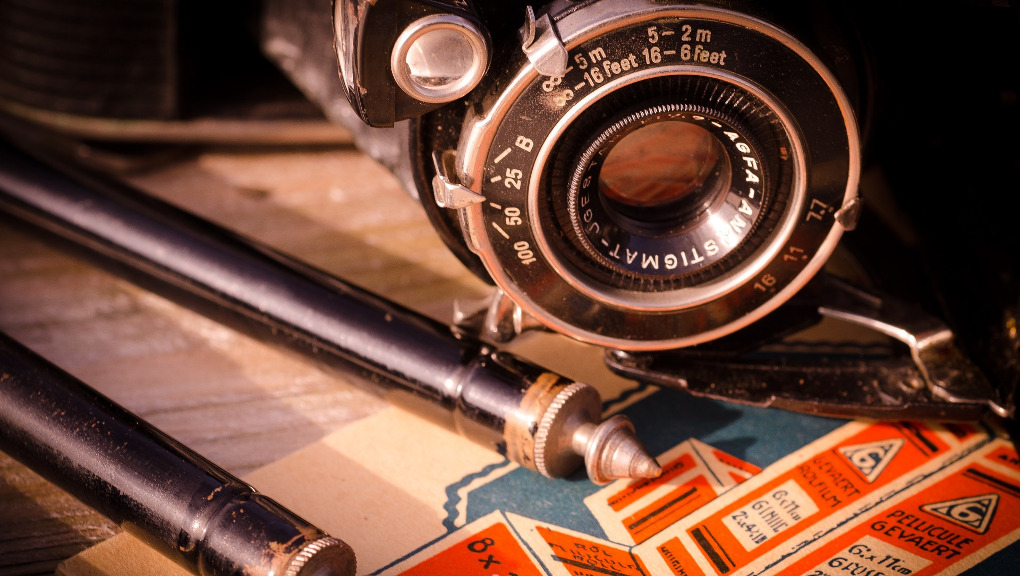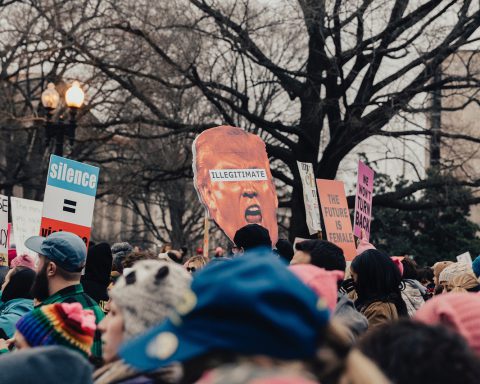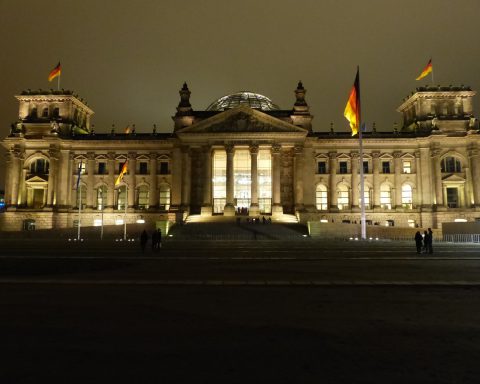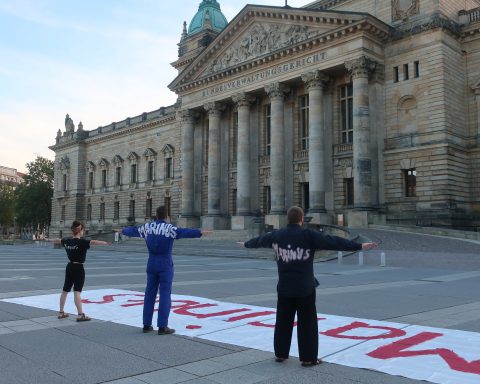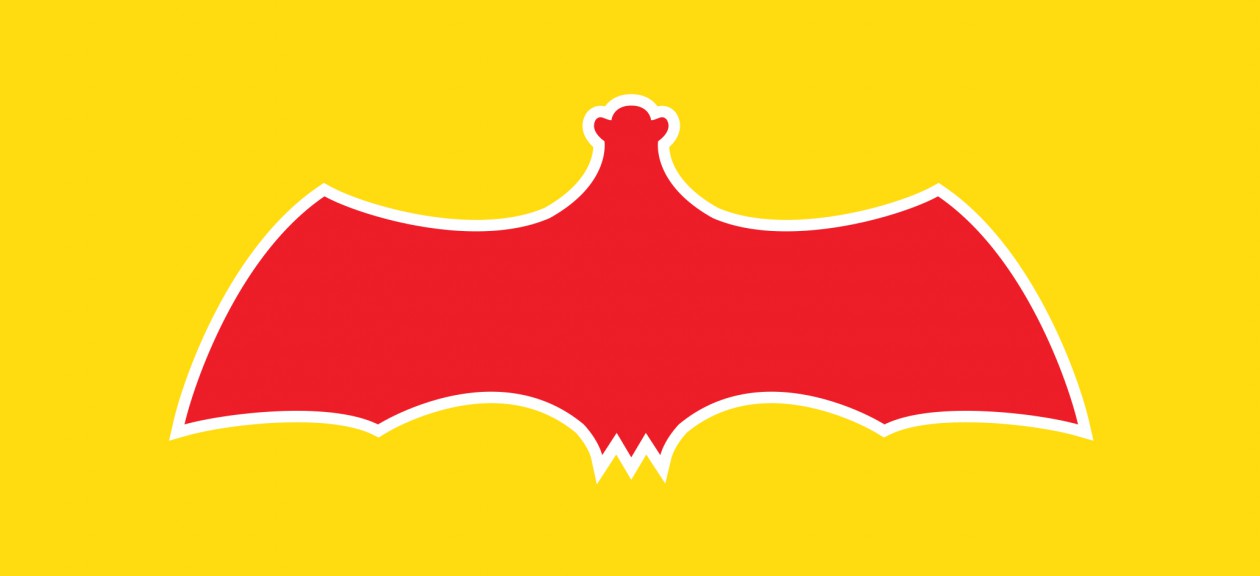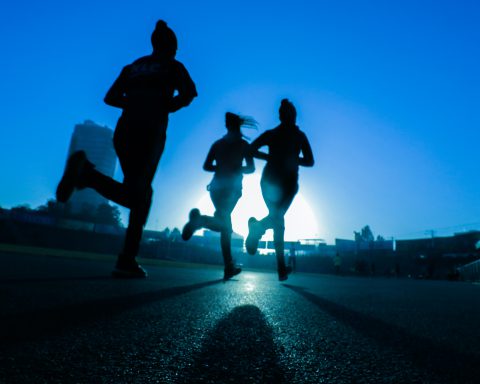If you ask a German over the age of 35 or so where they were when the Berlin Wall came down, chances are high that they can paint a vivid picture of that night. It is undeniable that this event is fixed into the memory of the people of Germany, not to mention millions around the world. However, reunification did not just happen with the fall of the wall.
I recently interviewed Dr. Kornelia Lobmeier, one of the historians responsible for developing the permanent exhibition, “Unsere Geschichte: Diktatur und Demokratie nach 1945” at the Zeitgeschichtliches Forum Leipzig. By now, you’ve hopefully learned the basic rundown of events, but there are a few crucial elements of the Peaceful Revolution that Dr. Lobmeier wants to make sure you don’t overlook.
She explained, “1989 was not just the fall of the Berlin Wall. There was history before that. The fall of the Berlin Wall would not have happened if the events before it did not happen. And I think that is important to communicate. It was not just a movement towards a reunified Germany. It was first and foremost a peace movement against this dictatorship. And it is important to know that actually many factors contributed to this.”
According to Dr. Lobmeier, several smaller groups led the way for the Peaceful Revolution.
Years before tens of thousands took to the streets in the autumn of 1989, several small opposition groups had already begun to organize and take action. One such peace movement that gained prominence was Schwerter zu Pflugscharen (“Swords to Ploughshares”), whose symbol became visible in demonstrations and especially on the jackets of supporters.
East Germany’s position on the border of the Iron Curtain meant that potential military escalation could happen on their doorstep. Peace activists called for armistice on both sides of the Iron Curtain (NATO and the Warsaw Pact), not only by the GDR.
Citizens concerned about the environmental destruction also began to assemble in the 1970s, with over 60 groups forming in the DDR by the end of the 80s. You only needed to take a deep breath in and feel the foul air sting the nose to see how the mining and chemical plants were wreaking havoc, especially in nearby places like Bitterfeld-Wolfen. Environmentalists began to plant trees and conduct research themselves (testing uranium levels and water quality), since such data was kept under wraps by the state.
The so-called “Bausoldaten” (“construction soldiers”) were members of the only military unit in the Warsaw Pact countries that allowed soldiers to refuse military service. Many of these men, conscientious objectors tied to Christian ideals, were active in the opposition movements. With all of these opposition groups forming and people becoming aware of the difference between the state’s propaganda and the stark reality, it became unavoidable that the culture took on a schizophrenic identity.
The state interpreted any act of protest as an attack on the regime, and thus members of these groups were often arrested, had their houses raided, and suffered consequences in their work and home life. And while none of these groups were large enough to make a dent in the regime’s power alone, they laid the groundwork for what eventually grew into the unstoppable force of the masses that marched in the GDR in 1989.
Leipzig’s role as a workers’ city was pivotal in toppling the SED.
Although international attention was usually focused on Berlin, Leipzig’s role as an industrial hub in the GDR proved to give more legitimacy to the rally cry “Wir sind das Volk!” Dr. Lobmeier explained that East Berlin was treated like a Schaufenster, or a “display window,” to show the West how developed and orderly the GDR was. But life in Leipzig revealed a different reality.
Soon enough, media from the West turned their eyes on Leipzig, when the Messe opened its doors to west Germans. The visible damage to the environment and the increasing breakdown of state authority – not to mention its clear intention to strike the opposition down – came to light. The working-class people began to realize who the hooligans and troublemakers really were.
Dr. Lobmeier explained: “This was always referred to as a state of workers and farmers. But then the workers and farmers went to the streets and demonstrated. And the call “We are the people” came from there. This is the people’s republic. The people made it and not capitalism. That was always the legend that people were told, that we are the better Germany because capitalism doesn’t have power here. The people have the power here. But then the people said, we want a completely different leadership. We are the people.”
When everyone gets behind one goal, you can actually change history.
Leipzigers were more unified in their demonstrations than Berliners. Dr. Lobmeier mentioned that the people wanting to leave the GDR and the people who wanted to stay walked together, which did not happen as much in Berlin: “When they went to the streets then, they were united in what they were against, namely this old fossilized system, the SED. One part wanted reunification. The other wanted a democratic GDR. The third wanted to go in some other direction. There were many different opinions about what should happen next. But the consensus of autumn 1989 was that it cannot go on like this. And they actually kick-started history.”
The cornerstone of the Peaceful Revolution was non-violence.
Many of these groups assembled at the churches. Especially in Leipzig and a few nearby towns, the churches made a conscious decision to be open to the people, even those in the opposition, in efforts to push back against militarization and environmental destruction. Despite the fact that the groups were not necessarily religious, the churches allowed these groups to assemble and talk freely there as long as they continued their work in a non-violent way. The most prominent example is, of course, the Prayers for Peace at Nikolaikirche, where the assemblies for the Monday Demonstrations originated.
Without question, the key to the success of the Peaceful Revolution was its peaceful marching orders. If demonstrators had incited violence or destruction, they would have given reason for the SED to intervene. Yet, against all intimidation attempts, citizens found themselves at the end of the 80s more frustrated and hopeless than ever before, and marched in solidarity with protesters in growing numbers, miraculously without bloodshed or violence.
This is completely opposite to the images of recent demonstrations, namely the one that occurred in Chemnitz in 2018. And despite claims from the right that this is “DDR 2.0,” it is crucial to remember, Dr. Lobmeier reminds us, that the people demonstrating in the GDR did not have police protection, did not have basic rights, did not have access to global media, and above all, did not promote violence as a method of enacting change. There is no way to compare the current situation to how life was back then.
So then, in the face of what we see today, how do we reflect on this special period of time?
Stay curious!
Above all, Dr. Lobmeier wants to emphasize that this movement is something that should absolutely be kept in our memories, should be talked about, and should give Germans pride: “When people outside of Germany see reports on the news of far-right groups marching in the street, they could see it as ‘dark Germany.’ But they should be curious about what happened here and talk with the people about their experience. People don’t necessarily talk about it in their daily life, but that doesn’t mean it should be avoided.”
It’s an exciting history. It started a chain reaction of events in Prague, Romania, and elsewhere in the Eastern Bloc.
Currently, a memorial to freedom and unity (Freiheits- und Einheitsdenkmal) is planned to be built in Berlin. Although Dr. Lobmeier wishes it were here in Leipzig, she thinks it is a refreshing change to have a memorial to the power of the people to write world history, as opposed to the usual statues of royalty and military heroes.
Many visitors that visit the permanent exhibition at the Zeitgeschichtliches Forum Leipzig write in the guestbook about how the Peaceful Revolution gives them hope for the situation in their own country. For those from places where division and state oppression are a current threat, this achievement offers an example of people taking history into their own hands to find peace and unity with one another.
The museum has several events celebrating the history of the Peaceful Revolution, such as films, readings, and discussions. While the events are mostly in German, the permanent exhibition has information in English. It is an excellent experience for learning about the full context of the history.
The original interview with Dr. Lobmeier was in German and all quotes have been translated into English.

